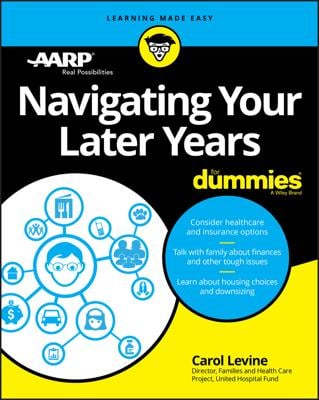Copyright © 2014 AARP. All rights reserved.
Assisted living as pertaining to long-term care for the elderly is a term that is often used as though everyone understands it in the same way. But that's not the case. Assisted living is just a generic term like hotel or automobile that covers a lot of options.
Before getting into the specifics, start with a simple definition: Assisted living is a residence where groups of people share meals and other activities and where individuals can receive personal assistance to maintain their independence. People who choose assisted living typically would have difficulty living completely on their own but do not require constant medical attention.
You can also think about assisted living as an intermediate step in long-term care. It is in the middle of the spectrum of long-term care, which often goes from independent living to assisted living to nursing-home care.
Independent living can be in your own home, or the entry level of assisted living or in special housing for older people. About 70 percent of residents in assisted living come to the facility from their own home or apartment.
Most definitions of assisted living come from industry or government sources and emphasize different aspects of this long-term care setting. It's important to keep the source in mind when you gather information. For example, the Assisted Living Federation of America, a trade organization, says: “Assisted living is a housing and health-care option that combines independence and personal care in a residential setting.”
The Eldercare Locator, a free service connected with the federal Administration on Aging (AoA), has an even more specific definition: “Assisted-living facilities offer a housing alternative for older adults who may need help with dressing, bathing, eating and toileting but do not require the intensive medical and nursing care provided in nursing homes.”
Living with a congenial group of people with whom to share meals, activities, and conversation is a potential benefit. Remember, though, that it is sometimes hard to make new friends in assisted living because they see a lot of turnover.
According to the 2010 National Survey of Residential Care Facilities (assisted-living facilities), most people stay in assisted living for only 22 months. Nearly 60 percent move on to a nursing facility, a third die, and the rest move home or to another location.
State governments, which license group residences, call assisted-living facilities by different names. Some examples of the state licensing categories are residential care facilities for the elderly (California), residential facilities for groups (Nevada), and personal care homes – assisted-living facilities (Pennsylvania).
You may also come across the acronym ALF in your search. It is shorthand for assisted-living facility, not the old TV character. Similarly, ALP is assisted-living program, not a mountain.
Owners of assisted-living facilities tend to shy away from that term in the name, preferring more appealing names like village, community, manor, or any phrase that evokes a secure and invigorating lifestyle.
Your state's name for assisted living is not as important as its licensing requirements and its monitoring activities. Some states have detailed standards about what counts as assisted living and what must be provided, as well as building and safety regulations.
When you check out your state's regulations, find out whether it has a bill of rights for assisted-living residents. Most states have such a document and generally require facilities to post it and give copies to residents. These documents may be lengthy.

